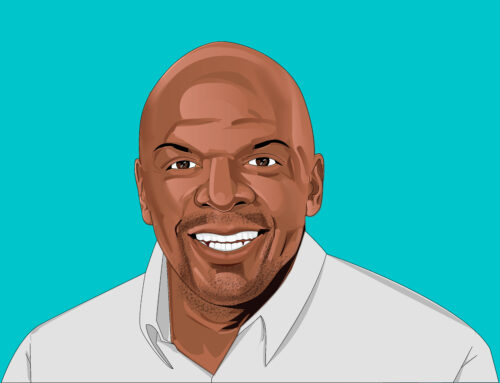Enter your information below to sign up to receive alerts on new interviews!
In this exciting episode of Talent Chronicles, we have Timothy Visconti, founder of PeopleLift joining us for a conversation about creating a positive candidate and client experience in recruiting. Visconti takes a deep dive into what automated technologies can be used to amplify the process while keeping the human in human resources.
JCSI: Hi, everybody. This is Bergin Sullivan with JCSI. I’m here today with Timothy Visconti, joining us for another interview in our “Talent Chronicles” series. Thanks so much for being here with us today!
Timothy: Thank you for having me.
JCSI: So you have a pretty vast experience of Talent Acquisition roles within industries like IT, Media, Pharma, and Entertaining all leading up to the founding of your current firm, PeopleLift.
Did you want to give us a quick explanation of how you got into Talent Acquisition and what led you up to founding PeopleLift?
Timothy: Sure. Like a lot of folks in the Talent Acquisition field, I kind of fell into it. Once I graduated from school, I started in a different industry, and then the recession hit, and all of a sudden there were very little jobs out there. So I jumped into recruiting at the first opportunity I had, not knowing what it was if I’m being brutally honest there. I found the intersection of what I love to do; which is to solve business problems and help people at the same time.
Throughout the 12 years or so I was on the agency side before transitioning into corporate where we started to find some breaks and opportunities to improve the system. This is now what we are now calling our Employee Experience Platform.
That’s what led to the formation of PeopleLift, with the idea of “Why are we doing this way?” “Why is there a disconnect from the Talent Acquisition experience, the Talent Management experience, and the Succession Experience?” “Why can’t we tie them all into one larger strategy to improve not only the health of the employer but the employee as well?”
JCSI: All right, and looking at your past experiences from the company side as well as from the candidate side, what does a good candidate experience mean to you and how can you make that an effective one?
Timothy: We’re defining that as we go with each of our clients and it’s unique because candidate experience is much like a life experience. You’re going to have different inputs, changes, and challenges that go through it but for us, it is a white glove red carpet experience from the brand unaware to your first day, so the recruiting experience.
We focus on:
- A heavily data-centric, personalized, and customized experience from your first day to your first review.
- A heavy training focus.
- A continuous learning education experience from that first review to your last day.
So all of these are custom-built per position, per organization, per budget to allow the maximum impact. But in the end, it’s all about creating the recipe for a long-term employment experience which has been sadly a lot of ways removed from the day to day lives. There are no gold watches and pension plans anymore, so how do we create the maximum amount of value from each of those experiences for our clients?
JCSI: Okay, and in terms of those experiences that you’re looking to get, how do you aim to provide those? You mentioned things are a lot different now, so how do you plan for that?
Timothy: Sure. For us, it’s a combination of the wonderful technology that’s out there as well as experience of what not to do, and it’s almost grown through pain in a lot of ways. So we leverage AI and machine learning-based technology to help us automate the vast majority of the parts of our business that pull away from the experience. We then leverage those high touch points throughout the entire employee experiences we mentioned.
We use each of those three different kinds of verticals we discussed to be able to provide a centralized, customized one-sheeter, if you will, on how we can improve your overall life. So how do we integrate them?
It is human input, machine input, but then also a framework that’s designed around agile-based principles and methodologies to create this almost sprint-like mentality. So for engineering, for example, we have a release cycle every couple of weeks, we’re going to push out new features every couple of months. So within the employee experience, we have a calibration every couple of weeks, we push out a new learning experience, a new growth opportunity for you every few months.
It’s that cycle back and forth letting the machines tell us when those signals are occurring and then letting the human interaction, bringing the human back to HR if you will, help drive the rest of that experience in that ship.
JCSI: Okay. And do you find that you will customize those plans based on who the individual is as a candidate?
Timothy: It is, it’s both sides because we’re dealing with two humans here and you have the Hiring Manager side, and then you have the employee side. And most of the time, they’re very different, you know, they’re not all going to be hiring the same persona or the same kind of culture. We highly encourage diversity of thought and the creative tension that you get within hiring diverse level candidates across the board.
So, it has to be custom-built. But as long as the framework is stable, and as long as you’re feeding the machines proper unbiased data points then it is a magical equation that could result from each of those three core experiences we discussed.
JCSI: What kind of determinators do you look for to see if the plan is working, so if they are getting a positive experience?
Timothy: I mean, survey data is a wonderful baseline. There’s a lot of technology that’s going after what they call nudges if you will, how you internally respond to certain indicators. What’s your overall engagement score? What’s your productivity look like week-over-week?
I treat it like a stock market because instead of looking at it as a one-time yearly review, we have multiple check-ins per month. It seems a little intensive in the beginning, but the idea is you get ahead of problems. So, you have all the base level data points but there’s a lot that we’re exploring as well.
So, you know, especially in this new remote world, there’s this propensity of seeing are they slacking, or are they online for a certain number of hours per day? We push against that; we push back to the output. How do you specifically accomplish the tasks that you’re given and drive solutions for each of those and then incorporate data points, communication styles, manager feedback that all feed into that larger strategy? So it is quite complex from a 30,000-foot view but when it gets down to it, it’s “how are you doing?” How can we improve and those challenges and opportunities we have within all those individual touch points that drive those future solutions?
JCSI: What type of automated technologies do you see affecting not only the Recruitment and Talent Acquisition industry as a whole but also with what you’re doing with the candidate experience?
Timothy: Every week there’s a new piece of tech out there that scares me and inspires me at the same time. So, you know, you can have automated sourcing that does open web data scraping to pull candidates into larger campaigns, that’s one way. You see, Laszlo Bock, former Head of People from Google is now working for a group that is doing those nudges as I mentioned, those kinds of three or four times a week little check-ins, how are you doing? Fill out this quick little look. You see that in Delta as well, how is your experience as you go to a kiosk? Did you like it? Was it okay or was there something we can improve?
So, each of those is kind of coming to the forefront and one of the more intriguing things is that you’re starting to see those across the entire talent management platform now. It used to be that we’d judge how much ‘on-time email responsive rates’, how much production you’re able to produce?
Now, it is how quickly and how accurately are you delivering projects of pure output base which leaves a massive gap for how you feel. And that’s where a lot of these areas are starting to get into, and I believe the evolution of Talent Management is going to be focused on the psychology base. How do we lift people in this now disconnected world to create those connected opportunities?
JCSI: Going back to your point before about ‘keeping the human in human resources’, how do you avoid coming off to automated? So when you’re taking advantage of these awesome technologies and using them to automate that process, how do you still make it seem like there’s a human behind the technology?
Timothy: That’s the dance that anyone who is going to be leveraging or experiencing AI or Machine Learning is going to play with. It’s going to be, you break a few eggs and you make some mistakes and you ask for candidate feedback.
So one of the first things just from a baseline standpoint when we outbound to a certain candidate is, they’re all custom-based to their persona. So, who are you specifically working for? What kind of problems do we assume that you’re solving? And what can we see and glean from the open web to help us create the most custom-level messages? We’re not recording your voice like Facebook or, Google who are going to drive those ads. We’re just taking an educated guess.
But then, the human comes in right behind that, so you’re not going to work your way through six different bots to get to a human, as a customer service experience these days for large companies. It is engagement then human, very quickly.
And then the second tiers as we go through those processes won’t bring back more automation and more opportunities there but there is a custom point for each of them. The second bit is, and I brainwash my employees into this, this Disney-level customer service experience, which means we’re going to think about what your problems are before and we’re going to solve them before you experience them. So this real red carpet on an individual level is exceptionally important to us. It’s why “We rise by lifting others” is right there on our landing page because we’re here to help people.
Now, we want to automate redundancy processes to help increase efficiency, sure, but we’re not going to sacrifice that for the human element. But then when we do make a mistake, when we do come off as overly descriptive, or as overly programmatic, we take a step back and say, how can we improve? And that’s one of the things that we go back to each of our clients, as well as our candidates to say, what can we do to help improve this?
We recently got a five-star rating on Google that said, “Tim and his group were the first recruiters that I’ve worked with a long time that treated us like a human.” And I even mentioned to her, I was like “There was AI elements that helped us get to that point. So how can we get that experience for you at scale?” So we’re learning as we grow into this space as well.
JCSI: All right. Well, that’s awesome. Was there anything else that you didn’t get a chance to add that you wanted to kind of speak to now?
Timothy: No, just that we’re an Employee Experience Management Consulting Firm. So when we say that we mean we’re focused on each of those three core experiences. More importantly, as we continue our growth story, we’re looking to help redefine what Talent Acquisition, Talent Management, and Talent Succession are in today’s marketplace.
Bergen: Thank you so much again for being here with us today for another episode in our “Talent Chronicles” series!
Timothy: Thank you very much.
Talent Chronicles is brought to you by JCSI, an innovative recruitment consultant that delivers better hires, faster, and at less cost.




